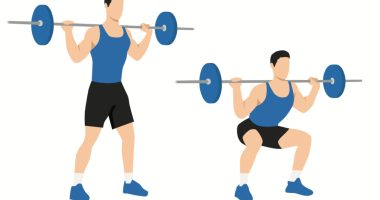There is no one-size-fits-all answer to the question of which sleeping position is the healthiest, as each position has its own benefits and drawbacks, and the best position for you may depend on your individual needs and preferences.
However, here are some general guidelines:
Sleeping on your back with a pillow to support your neck and head is often considered the healthiest position for most people, as it helps to keep your spine in a neutral position, which can reduce the risk of developing back pain. Sleeping on your back can also help to reduce acid reflux and minimize wrinkles on your face.
Sleeping on your side can also be a healthy option, particularly if you have sleep apnea or snore, as sleeping on your side can help to keep your airway open. Sleeping on your left side may also be beneficial for people with digestive issues, as it can help to reduce acid reflux symptoms.
Sleeping on your stomach is generally considered the least healthy position, as it can strain your neck and spine, and may also contribute to wrinkles and sagging skin on your face.
Ultimately, the best sleeping position for you will depend on your individual needs and preferences, as well as any underlying health conditions you may have. If you have any concerns about your sleeping position or quality of sleep, it’s always a good idea to consult with your doctor or a sleep specialist.
Concerning health conditions, here are some healthiest sleep positions
Best sleeping position for digestion
The best sleeping position for digestion is on your left side. This position helps promote the natural movement of waste through your digestive system and encourages the release of stomach contents into the small intestine.
When you lie on your left side, gravity helps food waste move more easily from the small intestine into the large intestine, which makes it easier for your body to eliminate waste. Additionally, lying on your left side can help prevent acid reflux by keeping your stomach lower than your esophagus, which can help reduce the likelihood of stomach acid traveling back up into your throat.
Don’t Miss | 8 Sperm-Killing Foods Intending Dads Need To Avoid Now
Best sleeping position for constipation
The best sleeping position for constipation is also on your left side. This position can help promote the natural movement of waste through your digestive system and encourage bowel movements.
As mentioned before, when you lie on your left side, gravity helps food waste move more easily from the small intestine into the large intestine, which can help facilitate the movement of stool through the colon and encourage bowel movements.
In addition to sleeping on your left side, there are other things you can do to help relieve constipation, such as increasing your water intake, eating a fiber-rich diet, exercising regularly, and taking time to relax and reduce stress.
Best sleeping position for heart health
The best sleeping position for the heart is on your left side. Sleeping on your left side can help improve circulation, reduce pressure on the heart, and decrease the risk of developing certain heart conditions such as congestive heart failure.
When you sleep on your left side, it allows gravity to help facilitate the flow of blood and lymphatic fluid from your heart and lymph nodes towards your left side, where they can be more easily eliminated from your body.
Additionally, sleeping on your left side can help reduce acid reflux symptoms by keeping the stomach contents lower in the stomach, away from the lower esophageal sphincter (LES), which can help prevent stomach acid from leaking into the esophagus.
Overall, if you are looking to improve your heart health, consider sleeping on your left side to help improve circulation and reduce pressure on your heart.
Healthiest sleeping position for heart attack
There is no specific sleeping position that is guaranteed to prevent a heart attack, as a heart attack is a complex medical event that can be influenced by many factors. However, some sleeping positions may be better than others for promoting heart health and reducing the risk of cardiovascular disease.
Sleeping on your left side may be the best position for heart health, as it can help improve circulation and reduce the risk of acid reflux, which can aggravate heartburn and chest pain. Additionally, sleeping on your left side can help take pressure off your heart and promote better blood flow to the heart.
On the other hand, sleeping on your back can increase the risk of snoring and sleep apnea, which can lead to high blood pressure and other cardiovascular problems. Sleeping on your stomach can also be problematic, as it can strain your neck and spine and make it difficult to breathe.
Ultimately, the best sleeping position for heart health will depend on your individual needs and preferences. If you have concerns about your heart health, it’s important to talk to your doctor about any lifestyle changes that may be beneficial, including changes to your sleep habits.
Healthiest sleeping position for anxiety
The best sleeping position for anxiety will depend on your individual needs and preferences.
Note: Sleeping on your stomach can be problematic for anxiety, as it can strain your neck and spine and make it difficult to breathe. Additionally, some people may find that sleeping in a fetal position (curled up on your side with your knees drawn up to your chest) can be comforting, while others may find it constricting or uncomfortable.
Don’t Miss | 12 Longan Fruit Side Effects You Should Be Aware Of Before Eating It
Best sleeping position for blood circulation
Sleeping on your back with a pillow under your knees is the best sleeping position for blood circulation. This position helps to keep your spine and neck in a neutral position, which promotes good blood flow to all parts of your body. It also reduces pressure on your joints, which can alleviate pain and discomfort.
Sleeping on your side with a pillow between your legs can also help improve blood circulation, as it can help reduce pressure on your hips and lower back. However, it’s important to make sure that your top leg doesn’t cross over your bottom leg, as this can restrict blood flow.
On the other hand, sleeping on your stomach is not recommended for optimal blood circulation, as it can put pressure on your neck and spine, leading to discomfort and potential health issues. Home










